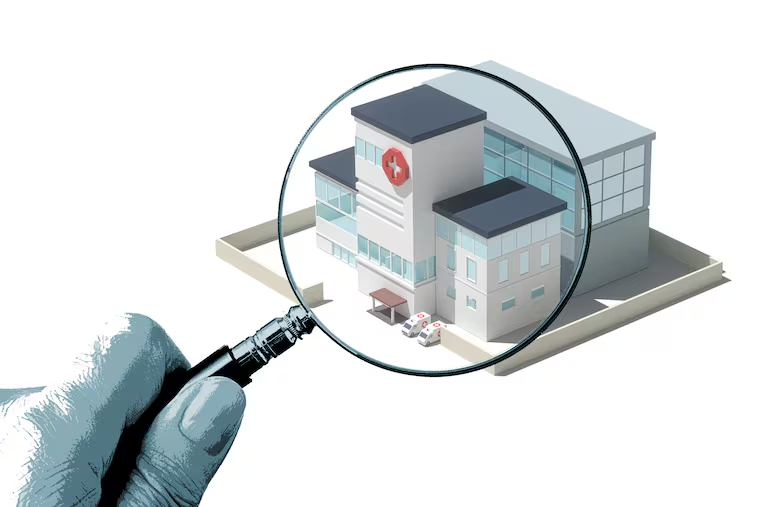Six months of inspections at Crozer-Chester Medical Center and Taylor Hospital: February to July
State health inspectors visited the two Crozer Health hospitals a dozen times to investigate potential safety problems between February and July.

Pennsylvania health inspectors cited Taylor Hospital for failing to properly monitor a behavioral health patient who left the hospital barefoot and without a cell phone, and was missing for six days.
The incident, first reported by The Inquirer in April, was one of a dozen times between February and July that the Pennsylvania Department of Health visited Taylor Hospital and Crozer-Chester Medical Center in Delaware County. Both are owned by Crozer Health and operate under a shared license. Inspection reports do not always specify whether inspectors visited Crozer-Chester in Upland or Taylor in Ridley Park.
Here’s a look at the publicly available details:
Feb. 8: Inspectors cited Taylor Hospital with its most serious warning, immediate jeopardy, after finding that a patient with mental health issues had been able to leave the hospital unnoticed because staff hadn’t monitored her closely enough. The hospital created a log to track when patients leave against medical advice after doctors have determined they could be a risk to themselves or others. The hospital also trained nurses to screen patients for risk of running away, and agreed to monitor patient files.
March 11: Inspectors cited Crozer for not having a working cardiopulmonary bypass machine, a violation of state rules requiring hospitals to be equipped to provide all medical services offered. In a January incident, one patient was already at the catheter lab and had to be transferred to another hospital, and new incoming emergency calls about heart attack patients were diverted elsewhere. Inspectors found that the machine had failed a quality control test 10 days earlier, and that the manufacturer had told the hospital it could not be repaired. The hospital designated a “director-level” staff member to oversee equipment maintenance and agreed to monitor broken equipment logs.
March 26: Inspectors came to investigate two complaints but found the hospital was in compliance. Complaint details are not made public when inspectors determine it was unfounded.
April 10: Inspectors followed up on the February complaint related to the behavioral health patient who went missing and found the hospital was in compliance.
May 2: Inspectors came to investigate a complaint but found the hospital was in compliance.
May 24: Inspectors followed up again on the February complaint related to a patient who went missing and found the hospital was in compliance.
May 30: Inspectors cited the hospital for not having proper voluntary release forms for behavioral health patients. In reviewing a sample of six patient files, they found two patients’ forms were incomplete; two more did not have a release form. The hospital retrained behavioral health staff on voluntary release protocol and agreed to monitor patient records.
June 20: Inspectors visited for a special monitoring survey and found the hospital was in compliance.
June 21: Inspectors came to investigate a complaint but found the hospital was in compliance.
July 3: Inspectors cited the hospital for not adequately monitoring three cardiac patients and for failing to complete criminal background checks for four of five staff whose files were reviewed. Inspectors found that patients with telemetry monitoring (a heart-rate tracker that helps alert doctors of abnormal rhythms) were not being reevaluated daily, as required under the hospital’s policy. The hospital retrained staff on cardiac monitoring policies and agreed to audit patient charts. The hospital also retrained staff on criminal background check requirements and agreed to monitoring.
July 12: Inspectors visited for a special monitoring survey and found the hospital was in compliance.
July 15: Inspectors came to investigate a complaint but found the hospital was in compliance.
July 23: Inspectors came to investigate a complaint but found the hospital was in compliance.